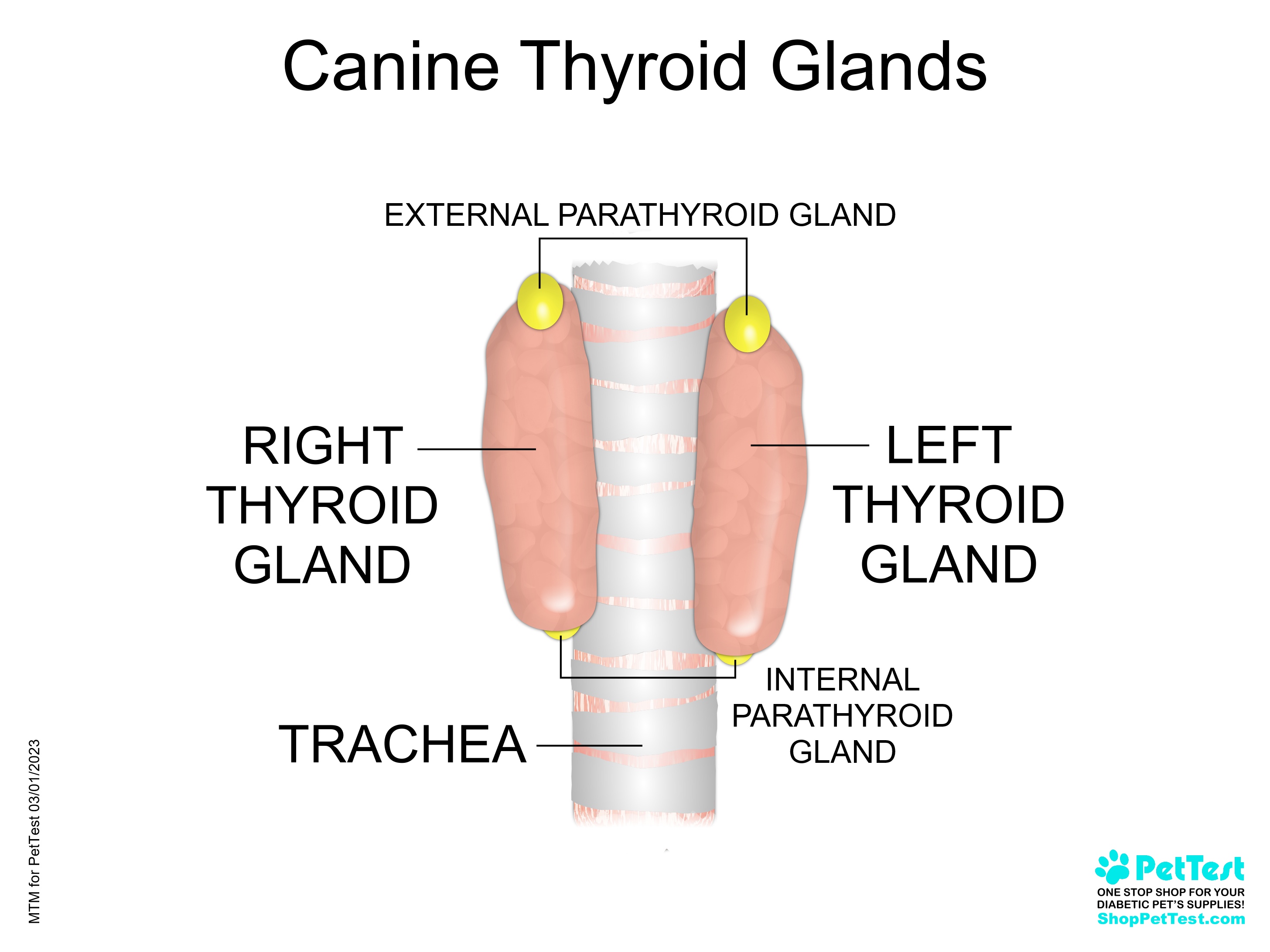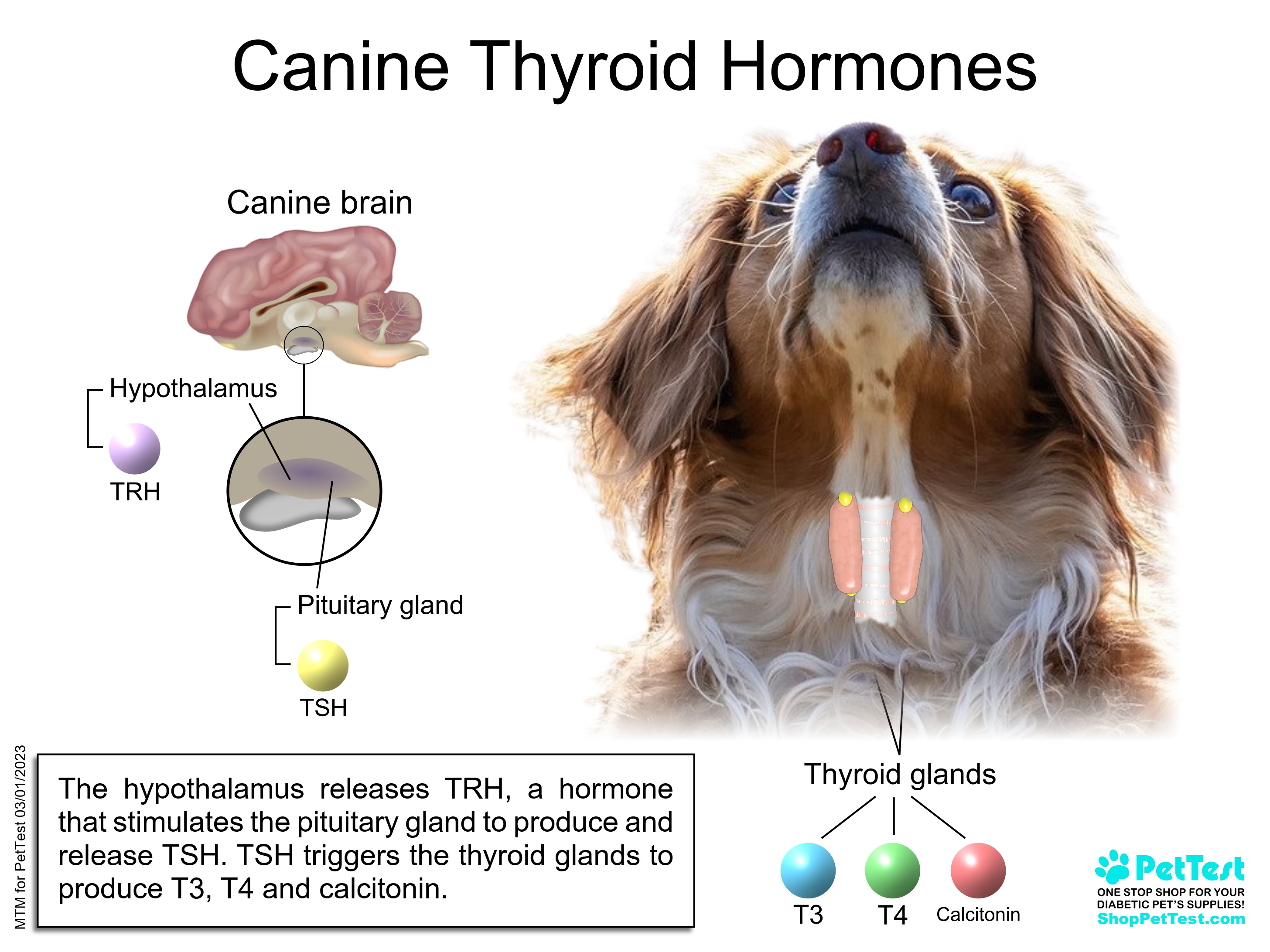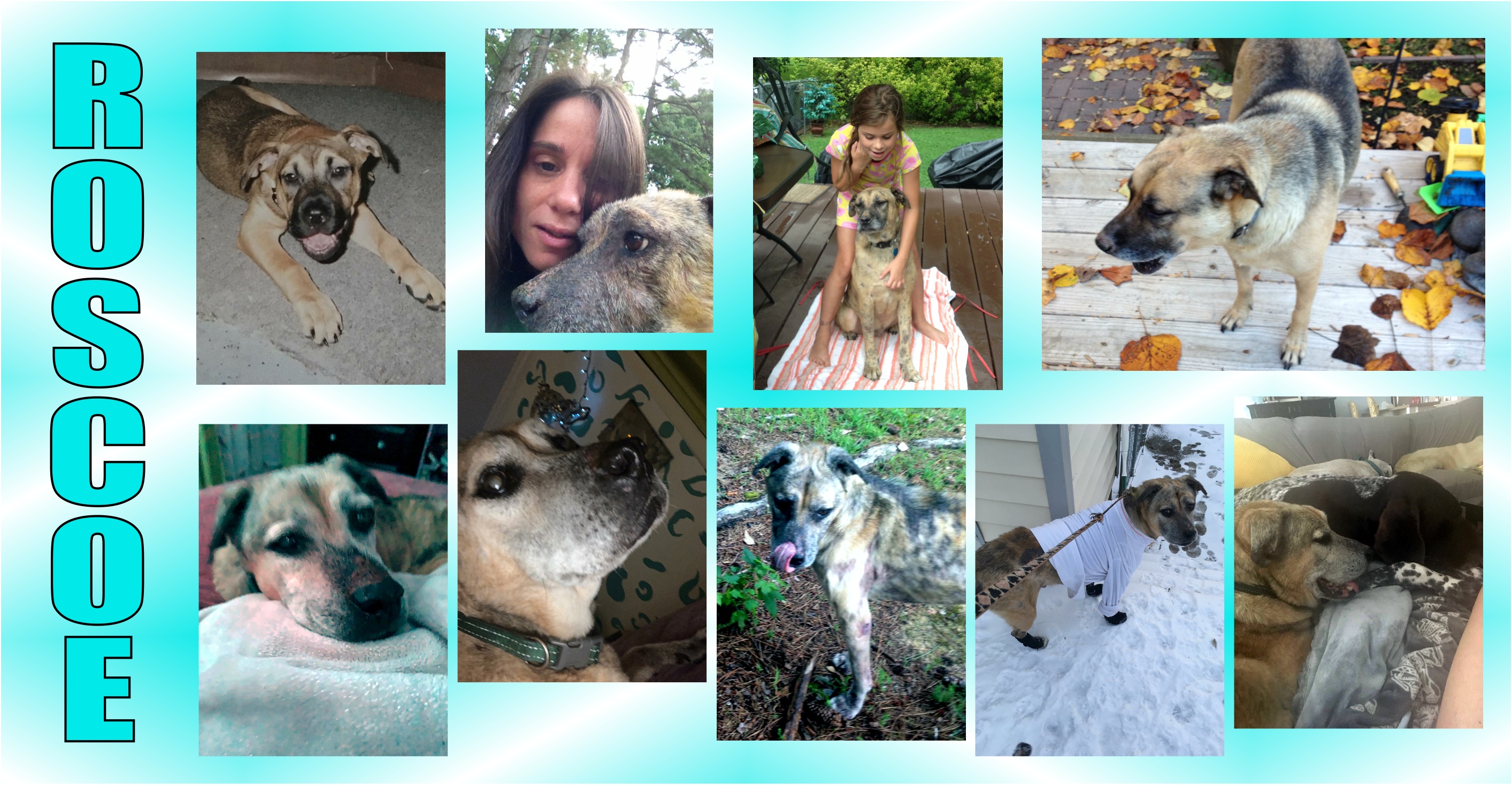Hypothyroidism in Dogs
There are so many diseases that humans and dogs both get; I have a family member that is hypothyroid, but I did not know that dogs could also be diagnosed with hypothyroidism. My friend Judit Punk’s dog, Roscoe, had an autoimmune skin disease, was hypothyroid and had diabetes. We have dogs in our Facebook group that are diabetic and have hypothyroidism so let’s go over the function of the thyroid glands, clinical symptoms of hypothyroidism and treatment. To follow up I have a short interview with Judit.
Let’s jump right in!

Function of the thyroid glands:
Thyroid glands are part of the endocrine system. The endocrine system is responsible for producing and secreting hormones into the circulatory system. The thyroid glands produce hormones that regulate metabolic processes. Hormones that the thyroid glands produce:
- Triiodothyronine (T3)
- Thyroxine (T4)
- Calcitonin
Some of the things that the thyroid hormones do are regulate body temperature, metabolism, digestive functions, muscle control, brain development and function, maintenance of bones, and reduce calcium and phosphorus in blood.
Hypothyroidism also called underactive thyroid, happens when the thyroid glands under produce thyroid hormones. There are two types of hypothyroidism:
Primary hypothyroidism: over 95% of hypothyroidism in dogs is due to destruction of the thyroid glands. Lymphocytic thyroiditis and idiopathic atrophy of the thyroid gland are the two most common causes of primary hypothyroidism.
Secondary hypothyroidism: the most common cause of secondary hypothyroidism is the destruction of the pituitary thyrotropes due to a tumor in the pituitary gland. Thyrotropes in the pituitary gland produce the thyroid stimulating hormone (TSH). Congenital hypothyroidism is a rare form of secondary hypothyroidism.

Hypothyroidism is most commonly found in dogs from four to ten years old. Some breeds predisposed to hypothyroidism are the Airedale Terrier, Cocker Spaniel, Dachshund, Doberman Pinscher, Golden Retriever, Irish Setter and the Mini Schnauzer.
Clinical symptoms of hypothyroidism:
- Weight gain without increased appetite
- Lethargy
- Cold intolerance
- Exercise intolerance
- Dull coat with excessive shedding
- Balding
- Dark pigmentation of the skin
- Increased skin and ear infections
- High cholesterol
- Decreased heart rate
- Thickening of facial skin
- Lack of coordination
- Fat deposits in corneas of the eyes
- Dry eye
Diagnosis of Hypothyroidism:
If your dog has clinical symptoms of hypothyroidism IDEXX recommends initial testing:
- Total T4 (TT4)
- CBC
- Chemistry with electrolytes
- Complete urinalysis
If the Total T4 is low then further blood work need to be run and the following tests should be run:
- T4
- fT4 (free T4)
- TSH
- TgAA
Results:
Low fT4 ± high TSH ± positive TgAA = hypothyroidism is confirmed, and hypothyroid therapy should be started.
Normal fT4 & TSH, negative TgAA = hypothyroidism unlikely. Repeat testing in four to six weeks if hypothyroidism is still suspected.
Normal T4 and fT4 but positive TgAA requires fT4ED testing.
Treatment:
Treatment for hypothyroidism is a synthetic thyroxine sodium tablet, two common brands are Thyro-Tabs® Canine and Synthroid®. Starting dose is 100 mcg per 10 lbs. of body weight, split in two doses.
Bloodwork should be done four to eight weeks after starting medication to check thyroid levels. The tests recommended are the T4 and the fT4 tests.
If dog is positive TgAA at diagnosis, TgAA should be tested yearly and negative TgAA is optimal.
Some dogs with lymphocytic thyroiditis will produce thyroid autoantibodies (TAA). TAA binds to T4 and can cause falsely elevated T4 and fT4. fT4ED tests should be run to monitor T4 therapy.
TT4 and fT4 results are accurate when a dog shows positive T3 autoantibody (T3AA) results only.
Once your dog is on hypothyroid medication and levels are in therapeutic range, clinical symptoms will subside and your dog can live a normal healthy life!
Judit Punk and her sweet boy Roscoe dealt with several health issues but with medication Roscoe did very well and lived until he was 16 and a half years old, and I need to mention that Roscoe was a large dog! Here is my interview with Judit:
MM: When was Roscoe diagnosed with hypothyroidism and did he already have diabetes?
JP: Roscoe was diagnosed with hypothyroidism around January 2016 and he did not have diabetes at the time. He did have an autoimmune skin disease that made it harder to diagnose hypothyroidism due to having to take low dose steroids.
MM: What were his symptoms?
JP: He had ocular, neurological issues and ear infections. I’m not going to blame his skin issues since he had the autoimmune skin disease first.
MM: What was treatment?
JP: The treatment for hypothyroidism is levothyroxine, it’s synthetic T4 hormone.
MM: Were there any complications?
JP: There were no complications, the key is starting thyroid medication at a conservative dose. Starting dose is 100 mcg per 10 lbs. of body weight, split in two doses. For example: a 50lb. dog would get 500 mcg split in two, so 250 mcg every 12 hours. This medication needs to be given on an empty stomach.
MM: Are there any supplements you suggest?
JP: There are no supplements that will replace the missing hormone thyroxine, prescription medication must be given.
Probiotics are great over all immune system support Dr. Dodds also suggested standard process thyroid support (not sure if the ingredients are diabetic friendly).
MM: How common is hypothyroidism in dogs?
JP: Hypothyroidism is the very common and unfortunately it’s also the most over diagnosed endocrine disease, so make sure that the proper tests are run to diagnose hypothyroidism.
MM: How common is hypothyroidism in diabetic dogs?
JP: In some breeds and even crosses it is common. I would always suggest getting breeds like Havanese, Boxers, Golden Retrievers, Doberman, Great Danes, Beagles, Labradors and Cocker Spaniels tested if you are having issues regulating blood glucose.

Thank you so much Judit for taking the time for an interview and thank you so much for your knowledge!
If your dog has hypothyroidism and you need support and want to learn more, please join the Facebook group that Judit admins: Dogs with Hypothyroidism.
I hoped today’s blog was informative and you learned as much as I did!
If you have any questions, comments or suggestions, please start a conversation below.
For a printable version of this blog click here.
Until next week stay comfy, warm and caffeinated!
Michelle Miller-Matlock
AAHA Certified Diabetes Educator
Founder/Administrator of DDO: Diabetic Dog Owners University
Administrator of Diabetic Dog Owners on Facebook
Want to learn all you can in a simple and easy to follow format? Please join DDO-U: Diabetic Dog Owners University , graciously sponsored by PetTest.
Be sure to join the PetTest family on Facebook and Instagram. PetTest has fun, interactive posts AND they have fabulous giveaways every week!
Do you need a blood glucose meter kit for your diabetes arsenal? Click here to purchase one today!
Sources:
Merck Animal Health - https://www.msdvetmanual.com/endocrine-system/the-thyroid-gland/hypothyroidism-in-animals
IDEXX - https://www.idexx.com/files/total-t4-testing-guide-cat-unified.pdf
Michigan State University - https://cvm.msu.edu/vdl/laboratory-sections/endocrinology/thyroid-function-in-dogs

